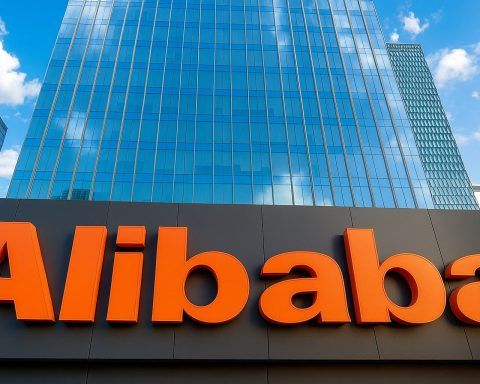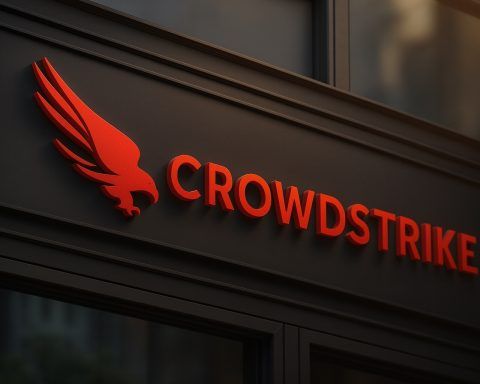Record Deliveries and Recent Developments
Chinese electric vehicle maker NIO Inc. (NYSE: NIO) has hit new milestones in late 2025, posting record-high delivery numbers and even outpacing Tesla in China for the first time. In October 2025, NIO delivered 40,397 vehicles, surpassing the 40,000 mark in a single month – a company record and the third consecutive monthly high [1]. This total was 92.6% higher year-on-year and about 16% above its September deliveries [2], underscoring a sharp growth trajectory. The surge was driven by strong demand across NIO’s expanding lineup and multi-brand strategy. NIO’s premium “NIO” brand contributed 17,143 units, while its new mass-market sub-brand ONVO delivered 17,342, and the entry-level FIREFLY brand added 5,912 in October [3]. Robust sales of the ONVO L90 SUV – topping 10,000 units per month for three months running – have been a highlight [4]. These achievements have pushed NIO’s cumulative vehicle deliveries to over 913,000 units since its inception [5], a testament to the company’s growing footprint in the EV market.
Notably, NIO’s October retail sales in China eclipsed Tesla’s for the first time, a symbolic victory in the world’s largest EV arena [6]. Tesla’s China volumes dipped to their lowest in years while NIO’s soared, reflecting shifting dynamics in favor of local manufacturers. NIO has leveraged innovations like its battery-swapping technology – which allows quick battery exchanges – and a refreshed model lineup to capture consumers amid intense competition. Recent launches such as the revamped NIO ES8 SUV and the introduction of the ONVO and FIREFLY brands (targeting different price segments) have broadened its appeal. The company also served as an official vehicle provider at China’s Import Expo in November, a small but notable mark of its rising profile [7].
Financial Results and Profitability Outlook
Behind the impressive delivery growth, NIO’s financial performance remains a mixed picture. The company is still losing money, though recent trends show improvement. In the most recently reported quarter (Q2 2025), NIO’s net loss narrowed to RMB 4.99 billion (~$697 million), the smallest loss since late 2023 [8]. Revenues have been climbing (trailing 12-month revenue stands around $9.65 billion [9]), but heavy expenses and pricing pressures have kept margins deeply negative. NIO’s operating margin was –32.5% and net margin –34.9% in the last year [10], indicating significant losses on each vehicle sold. High R&D and sales costs, as NIO scales up and competes in China’s EV price war, continue to weigh on the bottom line. Liquidity and leverage metrics also flash caution – with a current ratio of just 0.84 and a debt-to-equity ratio around –25 (negative equity from accumulated losses) [11], financial stress is evident. In fact, NIO’s Altman Z-Score sits in the distress zone [12], reflecting bankruptcy risk if conditions don’t improve over the next couple of years.
Turning the corner to profitability is management’s top priority. CEO William Li has outlined aggressive targets for the end of 2025: NIO aims to deliver 150,000 vehicles in Q4 2025 (about 50,000 per month) and achieve its first-ever quarterly profit on a non-GAAP basis in Q4 [13] [14]. To reach these goals, the company has been tightening cost controls and improving efficiency. It cut some headcount and paused non-essential projects in the past year [15]. NIO is also pushing for better margins on newer models – targeting vehicle gross margins of 16–17% in Q4 by ramping production and reducing discounts [16]. Recent signs are encouraging: NIO’s vehicle margin turned positive again in mid-2025 after prior weakness, and strong ONVO L90 and new ES8 sales are expected to improve scale economies. Still, skepticism remains about whether NIO can hit break-even so quickly. The upcoming Q3 2025 earnings report on November 25 will be a critical checkpoint. Analysts will watch if NIO’s third-quarter results show narrowing losses and healthy guidance for Q4. Any confirmation that the company is on track for a Q4 profit (even on an adjusted basis) could significantly boost investor confidence, while a setback in margins or delivery pace might temper the recent optimism.
Strategic Partnerships and Policy Factors
NIO’s strategy has included forging partnerships and navigating policy changes to support its growth. The company’s distinctive battery swapping network is one example – NIO has collaborated with firms like Zhejiang Geely and Changan Automobile to expand swapping stations across China [17]. Such partnerships help NIO accelerate infrastructure rollout (over 1,300 swap stations by 2022) and promote its battery-as-a-service model. NIO also partners with state-owned JAC Motors for manufacturing in Hefei [18], which has enabled it to scale production via two jointly operated factories. These alliances underscore NIO’s approach of building an ecosystem around its EVs, from production to charging (or swapping) and services. Going forward, NIO is reportedly seeking a European partner for its battery swap business as well [19]. With NIO expanding sales in Europe (and operating swap stations in Norway, Germany, and beyond), finding a local ally to co-invest in swap infrastructure could ease the financial burden of its overseas expansion.
Broader policy and regulatory shifts are also impacting NIO’s outlook. In China, government incentives have been a double-edged sword. On one hand, Beijing’s support for new energy vehicles (NEVs) – including purchase tax exemptions – has boosted EV adoption. In 2025, buyers of electric cars pay no purchase tax (up to ¥30,000), which has helped stimulate demand [20]. However, this policy is about to scale down: starting January 1, 2026, China will halve the NEV tax break (to a ¥15,000 cap) through 2027 [21]. The looming reduction is already triggering a year-end sales rush [22] [23] as consumers rush to buy EVs before incentives decline. NIO could benefit from this pull-forward in late 2025, potentially boosting Q4 orders. But it also means the company may face a demand softness in early 2026 once the tax perk diminishes [24]. Additionally, officials have tightened criteria for which EVs qualify for subsidies, aiming to curb a pure price war and push automakers toward “value-driven competition” [25]. NIO, with its emphasis on premium technology (and battery swapping qualifying its higher-priced models for incentives in the past), may be relatively well-positioned for this shift, but the entire industry’s competitive landscape is likely to intensify as subsidies wane.
Internationally, trade policies pose another challenge. U.S.-China tensions and Europe’s scrutiny of Chinese EV imports are influencing NIO’s global strategy. The European Union launched an anti-subsidy investigation in 2024, which could result in tariffs on Chinese EVs. In response, NIO has adjusted its expansion plans: the company is focusing more on its home market and seeking creative ways to mitigate export costs [26]. CNBC reported that NIO is exploring arrangements where battery assets in Europe are managed by partners to reduce NIO’s capital expenditure and to potentially sidestep heavy EU tariffs [27]. Despite these headwinds, NIO’s leadership remains publicly optimistic. CEO William Li recently stated he is “still confident” about reaching profitability in Q4 2025 and continues to pursue overseas growth albeit with a more localized approach [28]. Policy support in China (for example, local EV infrastructure investments and eased license plate quotas for EVs in cities) and NIO’s innovation-driven ethos (the firm invests heavily in autonomous driving and even smartphone integration in its cars) could provide tailwinds. But the company must also contend with fierce domestic rivals like BYD, Li Auto, XPeng, and a resurgent Tesla – all vying for the same market, often by slashing prices or launching new models rapidly.
Market Reaction and Analyst Sentiment
Investor sentiment toward NIO stock has improved markedly in the second half of 2025, though it remains cautious. On the back of record delivery news, NIO’s U.S.-listed shares saw a relief rally – climbing about 2% in early Novemberafter the October sales were announced [29]. The stock has been volatile, however. It surged over 40% from summer 2025 lows through early November, then pulled back slightly by mid-November. As of November 15, 2025, NIO shares trade around the mid-$6 range, having roughly doubled from their 2023 trough but still well below historic highs. Year-to-date in 2025, the stock is up significantly (over 45% by late August [30] and remaining positive for the year), reflecting renewed optimism as NIO’s growth story regained momentum. At the same time, bouts of profit-taking have occurred on concerns about dilution (NIO has in the past issued new shares or debt to raise cash) and ongoing losses. For example, the stock initially popped on the record deliveries but later seesawed as traders assessed how rising volumes will translate to the bottom line.
Wall Street analysts are divided on NIO’s prospects. The consensus rating is a cautious “Hold” [31]. Out of 13 analysts tracked recently, 4 rate NIO a Buy, 7 say Hold, and 2 recommend Sell [32] – underscoring mixed views. Price targets also cluster around NIO’s current price, implying limited near-term upside according to the average forecast. The average 12-month target is about $6.75 per share (approximately 9–10% above recent trading levels) [33]. Many analysts have been gradually raising their targets in light of NIO’s delivery turnaround, but the increases are measured. For instance, Goldman Sachs recently hiked its target from a very bearish $4.30 to $7.00, after NIO’s new model launches improved its sales outlook [34] [35]. Goldman noted that the success of the ONVO L90 and new ES8 boosted NIO’s competitiveness and raised its long-term sales forecasts by ~6–11%. Still, at a $7 target, Goldman sees the stock as fairly valued for now (their target was roughly the market price in early November, and they kept a Neutral rating with “limited upside” [36] [37]). Similarly, Mizuho Securities in September cited NIO’s delivery growth but called the stock fairly valued around 0.8× 2026 sales, setting a mid-single-digit price target [38].
On the more bullish end, J.P. Morgan has turned optimistic: in November, J.P. Morgan upgraded NIO to Overweight and raised its target to $8, up from a pessimistic $4.80 prior [39]. The JPMorgan team, led by analyst Nick Lai, sees NIO’s recent strategy – especially the popularity of its new SUVs – as setting the stage for further upside, and they pointed to upcoming catalysts (such as a potential profitable quarter, new model launches, and policy support) that could drive shares higher. A few other brokers have price targets in the $8–$9 range (the current Street high is around $8.60 [40]), essentially betting that NIO’s growth will translate into a sustainably improving financial outlook in 2026 and beyond. However, even bullish analysts acknowledge the execution risks. Morgan Stanley, for example, while positive on NIO’s long-term technology positioning, has expressed skepticism about the company’s ambitious Q4 delivery and margin targets. Morgan Stanley’s analysts caution that NIO and peers (like XPeng) are pursuing aggressive volume goals in an environment of flat or thin vehicle margins, which could prove challenging [41]. This wariness reflects the broader market view: NIO’s soaring sales are exciting, but investors want to see profit metrics catch up. Until then, the stock may remain range-bound, reacting sharply to any news on whether NIO is closing the profitability gap.
It’s also worth noting that market sentiment has been swayed by media coverage and social buzz. NIO’s achievement of beating Tesla’s China sales in October garnered positive headlines, adding to the bullish narrative of local champion vs. foreign incumbent. Posts on Chinese social media (X/Weibo) from industry watchers like former Auto analyst Lei Xing have highlighted NIO’s comeback, with some predicting China’s EV penetration could hit 80% in a few years – a trend that would lift all major EV makers. At the same time, NIO faced criticism earlier in 2025 when some of its older models (the “7-series” sedans and SUVs) saw sales stagnate [42]. The company had to respond by refreshing its lineup and participating in the nationwide price cuts to reignite demand. Additionally, a recent government crackdown on exaggerated online car marketing in China put all automakers on notice [43]. NIO’s management has been careful with its messaging, reaffirming commitments to cooperation and compliance. These nuances have kept NIO in the news and contributed to stock volatility. Overall, the market’s reaction to NIO is finely balanced between growth excitement and risk awareness – making the next few months of data (deliveries, earnings, and policy developments) crucial for setting the tone.
Short-Term Outlook (Late 2025 into 2026)
In the short term, NIO’s stock performance will hinge on a few key factors: delivering on its Q4 promises, managing the post-incentive market in China, and broader market sentiment toward high-growth tech stocks. Fundamentally, the fourth quarter of 2025 is shaping up to be pivotal. NIO is on track for another record quarter – October’s 40k+ deliveries provide a strong start, and if the company approaches its 150,000-unit Q4 target, it would mark a dramatic jump in scale. Achieving anywhere near 50,000 deliveries in both November and December would reinforce that NIO’s production ramp and demand are robust. Such results could also lend credibility to management’s projection of reaching break-even by Q4. Investors will be closely watching the November delivery numbers (due in early December) for confirmation that October’s strength is being sustained or improved upon. Any indication that NIO can meet (or beat) its ambitious monthly delivery goals may catalyze a short-term rally in the stock, as it would imply revenue tailwinds heading into 2026.
However, if NIO stumbles – for example, if supply chain constraints or competition slow the delivery momentum in November/December – the market could react sharply. The stock’s recent pullback suggests some traders are hedging bets ahead of earnings. Technically, NIO’s chart reflects this cautious optimism. After a strong rise through October, the stock has been trading in a consolidation range. Its 14-day Relative Strength Index (RSI) is around 55, indicating neither an overbought nor oversold condition [44]. Meanwhile, NIO is hovering near its short-term moving averages; the 20-day SMA is roughly $7.1, just above the latest price [45]. This suggests a neutral near-term trend – the rally has paused as the market awaits further signals. If bullish news arrives (such as an earnings beat or improving margins), NIO could break above resistance around the recent highs (~$7.5). On the downside, there appears to be support in the mid-$5 to low-$6 range from earlier this year. Traders should expect volatility to remain high: NIO’s beta is about 1.77, meaning it tends to swing more than the market average [46]. In fact, the stock has regularly moved double-digits in reaction to monthly delivery updates or policy news. Stop-and-go trading is likely to continue through the year’s end, especially as macro factors (like global interest rates or Chinese economic news) intersect with NIO’s company-specific developments.
Looking into early 2026, one immediate challenge will be the potential pullback in Chinese EV sales after the tax incentive cut. As noted, a lot of buyers may have expedited purchases into 2025 to grab the full ¥30k tax break [47] [48]. January and Q1 2026 could therefore see a natural dip in NIO’s domestic sales growth rate. Short-term investors might brace for headlines of “China EV sales slow” in the new year, which could put pressure on stocks across the sector, including NIO. The company will need to manage this transition carefully – perhaps with marketing campaigns, exports, or new model buzz to bridge the gap. Notably, NIO has NIO Day 2025 (its annual customer event usually held in December or January) where it could unveil updates or new technology that generate excitement and orders. Any such announcements – for example, details on the next-gen NIO ES9 flagship SUVslated for 2026 [49] [50] – could bolster short-term sentiment and pre-orders. Additionally, the Chinese New Year period (late January 2026) often comes with promotions.
In summary of the near term: if NIO executes well in Q4 – hitting delivery records and showing clear progress toward margin improvement – its stock may enjoy a strong finish to 2025. We could see NIO shares revisit the high-$7s or higher in a year-end rally, assuming broader market conditions are stable. Conversely, any disappointment (such as a miss on the Q3 earnings report due Nov 25, or signs that cash burn remains high) might renew concerns and push the stock back down toward support levels. Given the balancing act between growth and profitability, many analysts are advising a wait-and-see stance through the next earnings release. In the very short term, volatility around the November 25 earnings callis expected – management’s commentary on orders, margins, and 2026 guidance will likely set the tone for NIO’s stock as the new year approaches.
Long-Term Forecast and Outlook
Looking beyond the next quarter, NIO’s long-term trajectory presents both significant upside potential and notable risks. On the bullish side, NIO has established itself as a major player in the global EV race, with a brand synonymous with innovation in premium electric mobility. The company’s strategy of operating multiple brands (NIO for luxury, ONVO for mainstream family cars, FIREFLY for compact entry-level) could pay dividends by capturing a broad swath of the market. If NIO can successfully scale each of these brands, it stands to substantially increase its total addressable market. Indeed, NIO’s leadership aims to double sales in 2025 compared to 2024 [51], and then continue high growth into the second half of the decade. Some industry forecasts see NIO delivering well over 500,000 vehicles annually before 2030 if trends hold. This kind of volume, combined with improving manufacturing efficiency, could turn NIO profitable on a sustained basis. Goldman Sachs analysts project NIO will reach full-year breakeven on an EBITDA basis by 2028, a year earlier than previously thought [52]. They cite the company’s recent product momentum as reason to believe losses will steadily shrink in coming years. Should NIO hit that timeline – or beat it – the stock would likely re-rate higher, as investors typically reward the inflection to profitability for high-growth companies.
Long-term bulls also point to NIO’s technological moats: its extensive battery swap network (with plans to expand thousands more stations), its focus on connectivity (NIO’s vehicles integrate with a user’s digital lifestyle, even including a NIO smartphone introduced in 2023), and its investments in autonomous driving R&D. NIO has been part of Formula E racing and touts its in-house software and ADAS (advanced driver-assistance) capabilities [53]. These could become differentiators as the EV market matures, potentially allowing NIO to charge premium prices or generate recurring revenue (for example, via battery subscription plans or software services). Moreover, NIO’s commitment to environmental sustainability and a “net-zero” roadmap resonates with ESG-focused investors. The company has outlined goals for carbon neutrality in operations, using renewable energy in its factories and supply chain [54]. As global policies increasingly favor green technologies, NIO’s alignment with these trends could attract strategic investments or partnerships (for instance, energy companies or tech firms interested in EV platforms). International expansion, while challenging, also represents a long-term growth avenue. NIO has begun sales in Europe (Germany, Norway, etc.) and eyes other markets in Asia. If it can crack Europe with localized production or partnerships (possibly hinted by recent executive visits to explore joint ventures [55]), NIO could become a global EV brand and not just a China champion.
However, the long-term risks and uncertainties cannot be ignored. Competition is perhaps the biggest: by 2025, virtually every global automaker is racing into the EV space. In China alone, NIO faces dozens of rivals – from market leader BYD (which dominates mass-market EVs) to fellow startups like Li Auto and XPeng, which have been innovating quickly (XPeng, for example, is rolling out advanced driver-assist robots and cutting-edge software at a rapid clip). Tesla remains a formidable competitor globally, and it has a track record of aggressive price cuts to defend market share. If an EV price war deepens or new models from competitors outshine NIO’s offerings, the company might struggle to meet its growth and margin targets. There is also operational risk around scaling up manufacturing. NIO is opening a third factory in late 2024/early 2025 [56] and plans further capacity for its new models. Rapid expansion can strain supply chains – recent industry chip shortages and battery material cost swings are a reminder that fast-growing automakers face supply and cost volatility. NIO has managed better than some peers by fostering close ties with suppliers (and leveraging partnerships like with CATL for batteries), but it will need to continue careful supply chain management as volumes grow. Additionally, regulatory and geopolitical factors could shape NIO’s long-term fortunes. The phasing out of subsidies in China by 2027 will test whether NIO can thrive on product strength alone. And if trade barriers rise (e.g., Europe imposing high tariffs on Chinese EVs), NIO might have to invest in overseas production or risk being locked out of key markets.
From a long-term investor’s perspective, NIO stock can be seen as a bet on the continued electrification of transportation and NIO’s ability to carve out a solid share of that future market. If NIO executes well, some analysts believe the stock has multibagger potential over the next 5–10 years. For instance, optimistic models envision NIO achieving Tesla-like valuation multiples once it proves sustained profitability, which could imply stock prices several times higher than today’s. Yet for that scenario to play out, NIO must navigate the next couple of years prudently: reaching profitability, managing debt (perhaps avoiding excessive dilution), and differentiating its brand in an increasingly crowded field. Given the current information, most experts maintain a conservative long-term outlook, waiting for clearer proof of NIO’s profit trajectory. The consensus 3-5 year view is that NIO will grow substantially in revenue and units, but margins will only gradually improve, meaning the stock may appreciate at a moderate pace rather than skyrocketing. It’s telling that even by late 2025, the average analyst 12-month price target in the high-$6 to $7 range [57] suggests only single-digit percentage upside. This could change, of course, if NIO surprises to the upside on earnings or if its new models (like the upcoming ES7 facelift and ES9 in 2026 [58] [59]) materially beat sales expectations. In the long run, a lot may hinge on NIO’s success in the premium EV segment – if it can establish a brand loyalty akin to a “Chinese Tesla” with robust ecosystem services (battery swapping, software, etc.), it could command higher margins and a higher stock valuation.
Bottom Line: NIO has entered late 2025 with remarkable sales momentum and a clear focus on reaching profitability. Short-term, the stock’s fate will ride on quarterly execution and market reactions to its financial progress. Long-term,NIO’s position in the EV revolution appears promising, but it must prove that its growth is sustainable and can be profitable. For now, the company is a study in contrasts – breakneck expansion paired with big losses – which makes its stock one of the more intriguing and closely watched in the EV sector. Investors on Google News and beyond will be watching each delivery report and earnings update into 2026, as NIO attempts to transition from a high-growth challenger into a profitable industry leader in the electric era.
Sources: Recent company reports and releases; NIO Investor Relations updates; CnEVPost and GuruFocus for delivery and financial data [60] [61]; Bloomberg/CNBC insights on strategy [62]; analyst commentary from Goldman Sachs and JPMorgan [63] [64]; and Chinese media on EV policy changes [65] [66]. All information is up to date as of November 15, 2025.
References
1. cnevpost.com, 2. cnevpost.com, 3. www.gurufocus.com, 4. www.tradingview.com, 5. www.gurufocus.com, 6. www.webpronews.com, 7. cnevpost.com, 8. cnevpost.com, 9. www.gurufocus.com, 10. www.gurufocus.com, 11. www.gurufocus.com, 12. www.gurufocus.com, 13. cnevpost.com, 14. cnevpost.com, 15. www.reuters.com, 16. cnevpost.com, 17. www.webpronews.com, 18. www.webpronews.com, 19. www.webpronews.com, 20. carnewschina.com, 21. carnewschina.com, 22. carnewschina.com, 23. carnewschina.com, 24. carnewschina.com, 25. carnewschina.com, 26. www.webpronews.com, 27. www.webpronews.com, 28. www.webpronews.com, 29. www.tradingview.com, 30. carboncredits.com, 31. www.marketbeat.com, 32. www.marketbeat.com, 33. www.marketbeat.com, 34. cnevpost.com, 35. cnevpost.com, 36. cnevpost.com, 37. cnevpost.com, 38. www.investing.com, 39. sherwood.news, 40. www.marketbeat.com, 41. www.webpronews.com, 42. www.webpronews.com, 43. www.webpronews.com, 44. www.gurufocus.com, 45. www.gurufocus.com, 46. www.gurufocus.com, 47. carnewschina.com, 48. carnewschina.com, 49. cnevpost.com, 50. cnevpost.com, 51. www.reuters.com, 52. cnevpost.com, 53. www.webpronews.com, 54. carboncredits.com, 55. www.webpronews.com, 56. www.reuters.com, 57. www.marketbeat.com, 58. cnevpost.com, 59. cnevpost.com, 60. cnevpost.com, 61. www.gurufocus.com, 62. www.webpronews.com, 63. cnevpost.com, 64. sherwood.news, 65. carnewschina.com, 66. carnewschina.com








